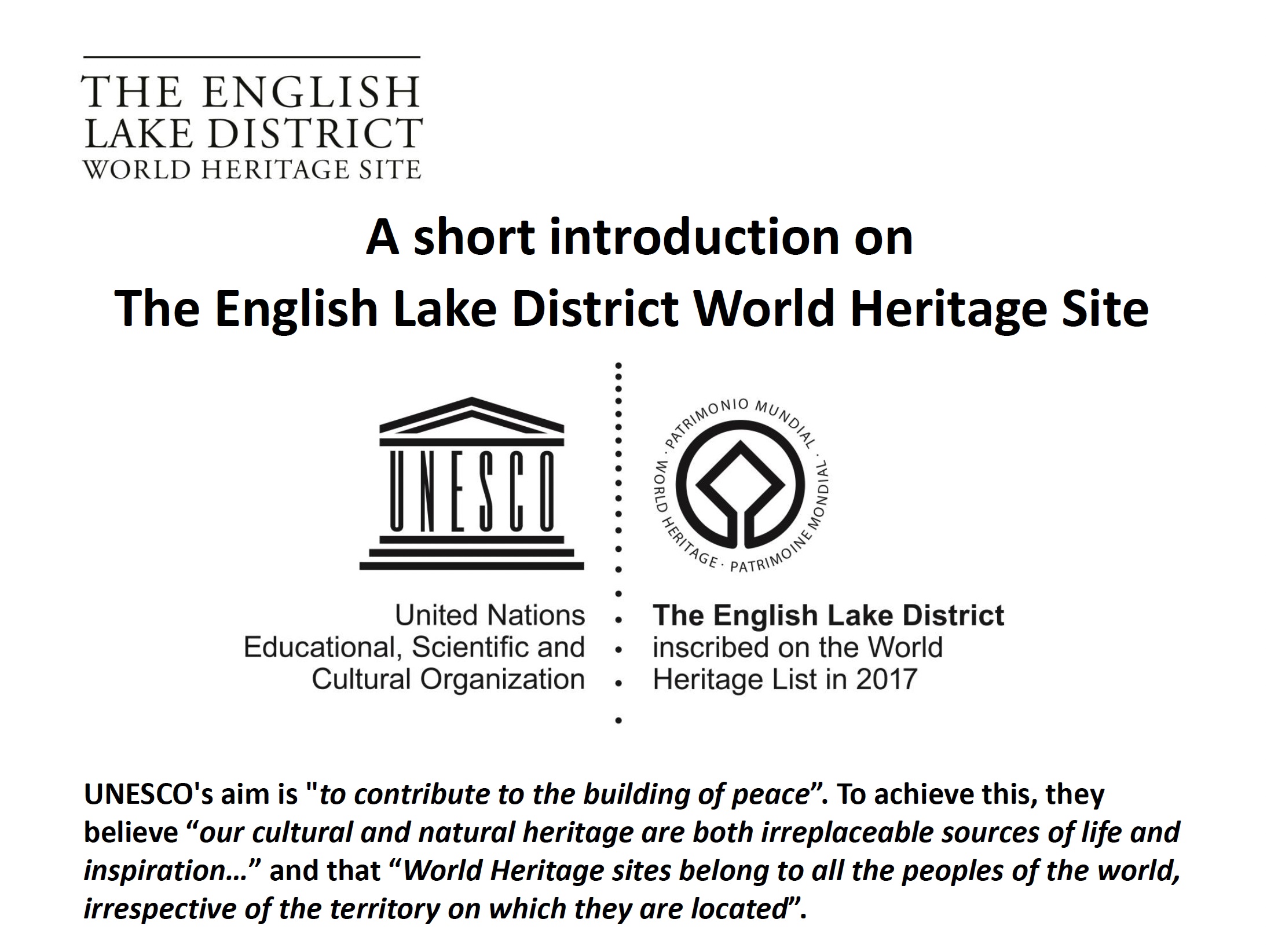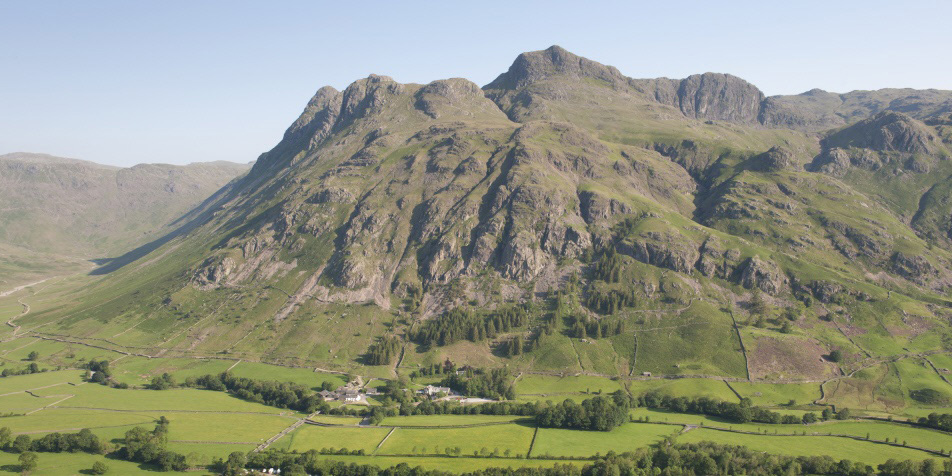Business Toolkit
f you need to build your awareness of the English Lake District World Heritage Site - what World Heritage is, how World Heritage Sites are selected, why the Lake District is a World Heritage, and how it's managed, these slides give you a quick introduction.

Download a short introduction on the Lake District World Heritage site.
This script accompanies the presentation providing a short and easy to follow introduction to the English Lake District World Heritage Site. The slides and the script have been developed to be read or delivered together.
Slide 1: Introduction to World Heritage
- World Heritage is a celebration of the planet’s cultural and natural treasures
- WH was established by UNESCO (United Nations Educational, Scientific and Cultural Organisation) as a means of bring countries together and to foster international peace and cooperation
Slide 2: Types of World Heritage Sites
There are nearly 1223 WHSs at present (up to 2024); they fall into 4 categories:
- Natural – eg Great Barrier Reef, Grand Canyon, Amazon rainforest, Giant’s Causeway
- Cultural – eg the Pyramids, Venice, Taj Mahal, Hadrian’s Wall
- Mixed – has both Natural and Cultural treasures; eg Machu Picchu (Inca city and important mountain rainforest)
- Cultural Landscape – demonstrate the changing relationship between people and place eg the English Lake District, Blaenavon
Slide 3: Why is the Lake District a World Heritage Site?
A WHS needs to have Outstanding Universal Value (OUV), or those attributes/reasons why it is so special and significant, that it belongs to the people of the world rather than just its homeland, now and for future generations
The Lake District’s OUV comprises 3 attributes or themes:
- Identity
- Inspiration
- Conservation
Slide 4: Identity – how people shaped the landscape
- 1000 years of traditional upland Lakeland farming, unique in Northern Europe
- Field structures – in-byes, intakes, common lands
- Typical and characteristic structures – white farms buildings, vernacular buildings like packhorse bridges
- Intangible traditions – hefting, sports days, shepherds’ meets, rural skills, local dialect
- Other industries shaped the Lake District landscapes
- Mining and quarrying – extracting the underground mineral and stone riches
- Woodland – coppicing, pollarding, charcoal making, fuel for smelters
Slide 5: Inspiration – how the landscape shaped people
- ~250 years ago, early tourists sought self-development through the Grand Tour in Europe
- War and revolution forced them to travel to the north of England
- They couldn’t comprehend/understand the Lakes’ landscapes
- Needed a new ‘language’ to appreciate what they saw = Picturesque Movement
- Wordsworth’s Romanticism went further, promoting the emotional relationship with landscapes
- Wordsworth advocated landscapes were for the people, regardless of ownership = ‘national property’
- Beloved landscapes led to valued landscapes, led to…
Slide 6: Conservation – how the Lake District is the birthplace of global landscape conservation
- Valued landscapes need looking after
- Over 250 years, the Lakes have played the role of ‘contested landscape’ and the debate how land should be used – for commercial gain (development) or public benefit (conservation)
- Thinking, debate, discussion, lobbying, action, negotiation…by the likes of William Wordsworth, Samuel Taylor Coleridge, John Ruskin, Beatrix Potter and more, led to…
- Two models of landscape protection having their roots here:
- Legislation – the founding fathers of national parks were inspired by the Lakes’ early conservationists to develop the national parks model of landscape protection
- Ownership – Canon Rawnsley inspired by the Lakes, helped to establish the creation of the National Trust
- Both models have spread and been adopted across the world; there are over 3000 NPs and 75+ National Trusts
Slide 7: Managing the World Heritage Site
Managed by a partnership, has a defined governance structure, single management plan.
